Linnea Tanner's Blog
September 3, 2025
Book Review Daughter of Mercia Julia Ibbotson #DaughterOfMercia #JuliaIbbotson #medieval #anglosaxon #dualtime #timeslip #timetravel #mystery #romance #BlogTour #TheCoffeePotBookClub @JuliaIbbotson @cathiedunn
I’m delighted to welcome Julia Ibbotson again as the featured author in The Coffee Pot Book Club Blog Tour, being held between August 21st – September 11th, 2025. Julia Ibbotson is the author of the medieval dual-time mystery romance, Daughter of Mercia (Dr Anna Petersen Mysteries, Book #1), published by Archbury Books on June 6th, 2025 (301 pages ebook; 392 pages print).
Below are highlights of Daughter of Mercia, Julia Ibbotson ’s author bio, and my 5-star review of her gripping duel time mystery romance set in 6th Century and modern-day Britain.

Tour Schedule Page: https://thecoffeepotbookclub.blogspot.com/2025/08/blog-tour-daughter-of-mercia-by-julia-ibbotson.html
HIGHLIGHTS: DAUGHTER OF MERCIA

Daughter of Mercia
(Dr Anna Petersen Mysteries, Book #1)
by Julia Ibbotson
Blurb:
Echoes of the past resonate across the centuries as Dr Anna Petersen, a medievalist and runologist, is struggling with past trauma and allowing herself to trust again. When archaeologist (and Anna’s old adversary) Professor Matt Beacham unearths a 6th century seax with a mysterious runic inscription, and reluctantly approaches Anna for help, a chain of events brings the past firmly back into her present. And why does the burial site also contain two sets of bones, one 6th century and the other modern?
As the past and present intermingle alarmingly, Anna and Matt need to work together to solve the mystery of the seax runes and the seemingly impossible burial, and to discover the truth about the past. Tensions rise and sparks fly between Anna and Matt. But how is 6th century Lady Mildryth of Mercia connected to Anna? Can they both be the Daughter of Mercia?
For fans of Barbara Erskine, Elena Collins, Pamela Hartshorne, Susanna Kearsley and Christina Courtenay.
Buy Link:
Universal Buy Link: https://myBook.to/DOMercia
This title is available to read on #KindleUnlimited.
AUTHOR BIO: JULIA IBBOTSON

Julia Ibbotson is fascinated by the medieval world and the concept of time. She is the author of historical mysteries with a frisson of romance. Her books are evocative of time and place, well-researched and uplifting page-turners. Her current series focuses on early medieval time-slip/dual-time mysteries.
Julia read English at Keele University, England, specialising in medieval language / literature / history, and has a PhD in socio-linguistics. After a turbulent time in Ghana, West Africa, she became a school teacher, then a university academic and researcher. Her break as an author came soon after she joined the RNA’s New Writers’ Scheme in 2015, with a three-book deal from Lume Books for a trilogy (Drumbeats) set in Ghana in the 1960s.
She has published five other books, including A Shape on the Air, an Anglo-Saxon timeslip mystery, and its two sequels The Dragon Tree and The Rune Stone. Her latest novel is the first of a new series of Anglo-Saxon dual-time mysteries, Daughter of Mercia, where echoes of the past resonate across the centuries.
Her books will appeal to fans of Barbara Erskine, Pamela Hartshorne, Susanna Kearsley, and Christina Courtenay. Her readers say: ‘Julia’s books captured my imagination’, ‘beautiful story-telling’, ‘evocative and well-paced storylines’, ‘brilliant and fascinating’ and ‘I just couldn’t put it down’.
Author Links:
Website Twitter / X Facebook Instagram Bluesky
Pinterest Amazon Author Page Goodreads
BOOK REVIEW: DAUGHTER OF MERCIA

When archaeologist Dr Anna Petersen, a medievalist and runologist, is summoned to a dig by the lead archaeologist, Professor Matt Beacham, he reluctantly asks her to interpret the ruins engraved on a medieval Saxon sword. Of most interest are two skeletons buried together at the dig—a 6th century woman and a modern-day man. The discovery opens up Anna’s raw emotions from a previous trauma and her current inexplicable visions. The possibility of Einstein’s mind-bending bridge theory and suspense abound in the duel-time mystery romance, Daughter of Mercia (Dr Anna Petersen Mysteries, Book #1) by Julia Ibbotson, set in 6th Century and modern-day Britain.
The mystery begins in 535 AD when Lady Mildryth beholds “a huge ball of light sear the night sky, streaking across the heavens, leaving a trail of flames and smoke and stars behind it.” Though she has adopted the new Christian faith, she fears the old gods of her homeland are stirring. The story alternates between Mildryth, an unmarried Angeln female ruler facing the prospect of marrying another ruler, and the modern-day archaeologist, Anna, fighting to retain her reputation after a traumatic breakup. As the storyline unfolds, Anna and Matt struggle to fit the pieces of the puzzle about what happened at the site in conjunction with actual events Mildryth is experiencing. It is as though Mildryth is reaching out to Anna across time to help her solve the mystery of how the present archaeological findings connect to the past in a theoretical “wormhole” or “portal.”
Author Julia Ibbotson masterfully weaves the duel-time events to create a gripping suspense that keeps you turning the pages. Vivid details of the time period and archaeological techniques demonstrate the author’s meticulous research on the time period and the methods used to interrupt findings. The culture and language of ancient Saxons are captured in juxtapose to modern-day Britain. Nonetheless, the protagonists are bound together through their visions. In many ways they are similar: engaging, independent women who dare to defy their superiors. Suspense builds as Anna and Matt uncover new evidence that could possibly link the disappearance of a person to events occurring simultaneously in the past. Twists in the storyline keep you turning the pages until the unexpected ending.
Daughter of Mercia promises to be the start of a new series about an archaeologist sleuth who solves mysteries from the past. I recommend it to those who enjoy reading duel-time romance mysteries and solving paradoxes that seems to defy logic but upon closer examination may lead to deeper understanding.
 Twitter: @cathiedunn
Twitter: @cathiedunn
Instagram & Threads: @thecoffeepotbookclub
Bluesky: @cathiedunn.bsky.social
September 1, 2025
G. M. Baker The Wanderer and the Way #HistoricalFiction #MedievalFiction #SantiagoDeCompostela #BlogTour #TheCoffeePotBookClub @mbakeranalecta @cathiedunn
I’m delighted to welcome G.M. Baker again as the featured author in The Coffee Pot Book Club Blog Tour being held between August 12th – September 2nd, 2025. G.M. Baker is the author of the Historical Fiction, The Wanderer and the Way (Cuthbert’s People, Book 4), published by Stories All the Way Down on March 10th, 2025 (249 pages).
Below are highlights of The Wanderer and the Way, G.M. Baker’s author bio, and a guest post about the historical background of the novel.

Tour Schedule Page: https://thecoffeepotbookclub.blogspot.com/2025/07/blog-tour-the-wanderer-and-the-way-by-g-m-baker.html
HIGHLIGHTS: THE WANDERER AND THE WAY
The Wanderer and the Way
(Cuthbert’s People, Book 4)
by G.M. Baker
Blurb:
The Camino de Santiago de Compostela, now the most famous pilgrimage route in the world, was founded in the early ninth century, largely due to the efforts of Bishop Theodemir of Iria Flavia. As with most people of this period, nothing seems to be known of his early years. What follows, therefore, is pure invention.
Theodemir returns footsore and disillusioned to his uncle’s villa in Iria Flavia, where he meets Agnes, his uncle’s gatekeeper, a woman of extraordinary beauty. He falls immediately in love. But Agnes has a fierce, though absent, husband; a secret past; another name, Elswyth; and a broken heart.
Witteric, Theodemir’s cruel and lascivious uncle, has his own plans for Agnes. When the king of Asturias asks Theodemir to undertake an embassy on his behalf to Charles, King of the Franks, the future Charlemagne, Theodemir plans to take Agnes with him to keep her out of Witteric’s clutches.
But though Agnes understands her danger as well as anyone, she refuses to go. And Theodemir dares not leave without her.
Any Triggers: Rape is mentioned by not portrayed.
Buy Link:
Universal Buy Link: https://books2read.com/thewandererandtheway
AUTHOR BIO: G.M. BAKER

Born in England to a teamster’s son and a coal miner’s daughter, G. M. (Mark) Baker now lives in Nova Scotia with his wife, no dogs, no horses, and no chickens. He prefers driving to flying, desert vistas to pointy trees, and quiet towns to bustling cities.
As a reader and as a writer, he does not believe in confining himself to one genre. He writes about kind abbesses and melancholy kings, about elf maidens and ship wreckers and shy falconers, about great beauties and their plain sisters, about sinners and saints and ordinary eccentrics. In his newsletter Stories All the Way Down, he discusses history, literature, the nature of story, and how not to market a novel.
Author Links:
Website Substack Twitter / X Facebook
Book Bub Amazon Author Page Goodreads
GUEST POST: HISTORICAL BACKGROUND
THE WANDERER AND THE WAY
The historical background to The Wanderer and the Way actually starts in a very distant place and with a very distant event, the great Viking raid on the holy island of Lindisfarne in AD 793. That was the event that set in motion the first novel of my Cuthbert’s People series, The Wistful and the Good, which led my main series character, Elswyth, the daughter of a minor Anglo-Saxon thegn living on the coast of Northumbria a little south of Lindisfarne, to find herself, in AD 798, the kidnapped wife of a Viking captain, living in the villa of a lascivious Visigothic lord in the Kingdom of Asturias in Northern Spain.
The late eighth century was a fascinating period with many notable events happening in close proximity. Having emerged from the chaos of the fall of Rome, a new Christian civilization was consolidating itself across Europe. The Roman and Irish churches, cut off for centuries by pagan invasions, had met and reconciled. In Britain it was the latter days of the Northumbrian renaissance, the rootstock of the Carolingian renaissance that occurred under Charlemagne. The great scholar Alcuin built a library in York and became a minister to Charlemagne. Charlemagne was consolidating Frankish control of Western Europe and would be crowned Holy Roman Emperor by the Pope in AD 800.
But Europe was also under attack from several directions. Viking raids had begun, though the Viking conquests of Britain and Normandy were still in the future. The Moors were attempting to complete their conquest of the Iberian Peninsula, the chief Christian holdout being the Visigothic Kingdom of Asturias, ruled by Alonzo the Chaste. In AD 812, Bishop Theodemir of Iria Flavia, in Asturias, would be instrumental in the discovery of the bones of St. James the Great, the patron of Spain, which would lead to the founding of the Camino de Santiago, or Way of St. James, now the most famous pilgrimage route in the world. Alonzo the Chaste was its first recorded pilgrim.
Having stranded Elswyth in Spain with no obvious way to get her home to Northumbria, I turned to a youthful Theodemir and gave him an entirely imaginary youth in which he encountered and fell in love with Elswyth, though she was living under the name Agnes at the time, having been given that name by Mother Wynflaed of Whitby in St. Agnes and the Selkie.
During this period, Alonzo the Chaste sent several embassies to Charlemagne to ask for recognition of his kingship and his help against the Moors. I could find no details of the method or composition of these embassies, so I had Alonzo choose Theodemir for his ambassador, and for his route, I sent him along what is now called the Camino Frances between Saint-Jean-Pied-de-Port and Santiago de Compostela. While it was not feasible to bring Charlemagne himself into the story, he being occupied with the conquest of the Avars at the time, I did contrive for Theodemir and Agnes to have a fruitful interview with Alcuin, then installed as the Abbot of Marmoutier Abbey in Tours.
Another element of the historical period that plays a role in the novel is the Adoptionism Controversy. Adoptionism was a Christian heresy that held that Christ acquired his divinity by adoption, rather than being eternally part of the Trinity as the orthodox position, defined at the Council of Nicaea, had taught. Ideological purity tests have long featured in the conduct of diplomacy, the making of alliances, and the provision of aid. They do so today, and they did so then. Whether one held to the orthodox trinitarian formula of Nicaea or to the Adoptionism doctrine was a vital issue in the day, and so it enters into Theodemir’s mission to Charlemagne.
These great events and issues, however, are merely the background to a much more intimate story about a young man who falls in love with a young woman and strives to save her from a grotesque fate though she herself would prefer to stand and face it in solidarity with the other women who were kidnapped with her, and also as a penance for her own crimes.
 Twitter: @cathiedunn
Twitter: @cathiedunn
Instagram & Threads: @thecoffeepotbookclub
Bluesky: @cathiedunn.bsky.social
August 31, 2025
Mike Weedall Escape To The Maroons #HistoricalFiction #AmericanHistoricalFiction #AfricanAmericanHistory #BlogTour #TheCoffeePotBookClub
I’m delighted to welcome Mike Weedall as the featured author in The Coffee Pot Book Club Blog Tour being held between September 1st – 5th, 2025. Mike Weedall is the author of the Historical Fiction, Escape To The Maroons, published by Historium Press on August 19th, 2025 (275 pages).
Below are highlights of Escape To The Maroons, Mike Weedall’s author bio, and an excerpt from the book.

Tour Schedule Page: https://thecoffeepotbookclub.blogspot.com/2025/08/blog-tour-escape-to-the-maroons-by-mike-weedall.html
HIGHLIGHTS: ESCAPE TO THE MAROONS
Escape To The Maroons
By MikeWeedall
Blurb:
In 1792, an escaped slave, raised and living as white, is discovered and forced to flee into the Great Dismal Swamp.
Barely escaping a bounty hunter, a Maroons community of fugitive slaves rescues him. Over time, Nathanial comes to accept his true identity while fighting to overcome the suspicions of his new community. Because of his pale skin, he becomes a conductor on the underground railroad, slipping runners onto ships going north. On one of his missions, fate intervenes and places Nathanial’s community at risk.
This little-known chapter in American history tells how escaped enslaved people gave their all to live free while creating a community and economy in one of the world’s most unforgiving environments.
Buy Links:
Universal Buy Links:
Ebook: https://geni.us/eRthZgH
Paperback: https://geni.us/RM5o
Hardcover: https://geni.us/AVs7
AUTHOR BIO: MIKE WEEDALL
As the author of three books, Mike’s passion is finding the little-known stories of history and bringing them to life. History in school is too often events and dates. Mike seeks to discover the people who lived those events and reveal why those individuals made the decisions they did. Ultimately, there are stories to be mined, and who doesn’t love a good story?
In his historical novel “Escape To The Maroons,” Mike tells the little-known story of 1791 self-liberated slaves who chose to struggle for survival in The Great Dismal Swamp in their determination to live free. The term Maroons delineates areas where escaped slaves fled and could not be recaptured. It’s estimated that over 2,000 survived deep in the swamp around the turn of that century.
His first book “Iva: The True Story of Tokyo Rose” describes the tragic life of Iva Toguri. Trapped in Japan during World War II, this Japanese American woman was forced to work for Radio Tokyo. Although she never participated in propaganda, the racial animus of post-war America led to her being falsely labelled as Tokyo Rose and prosecuted for treason. Through her incarceration and the ongoing discrimination heaped upon her, Iva never lost her courage and determination.
“War Angel: Korea 1950” was his second book that followed a reservist nurse thrust into the carnage of The Korean War. Serving as an operating room nurse in a Mobile Army Surgical Hospital, the real MASH and strength of a woman is revealed.
Mike resides with his family in the Pacific Northwest where they enjoy experiencing the outdoors.
Author Links:
Website: https://www.MikeWeedallAuthor.com
Facebook: https://www.facebook.com/profile.php?id=100094196717126
Book Bub: https://www.bookbub.com/profile/mike-weedall
TikTok: https://www.tiktok.com/@mike.weedall8
Amazon Author Page: https://www.amazon.com/stores/Mike-Weedall/author/B082J6MMN2
Goodreads: https://www.goodreads.com/author/show/5681426.Mike_Weedall
EXCERPT: ESCAPE TO THE MAROONS

Moses Reflecting On Saving A Fleeing Slave From A Bounty Hunter & Concern About The Safety Of Their Maroons Community
Sometimes, I don’t understand Linc. He tells us the most important thing is to avoid outside contact unless necessary for survival. When there’s no other way, only then we raid. So far, we’ve not had a problem.
It’s plain unlucky to bump into this runner today. We’re damn lucky to be alive.
Nothing good comes from dealing with whites. When the British made me a King’s Soldier in their army, they promised freedom if we helped defeat what they called a small American revolution. One day, without warning, them British got on their ships and left us with only our uniforms and guns. It was a matter of time before the Americans captured or killed us. At least I hid this gun before being taken prisoner. Thank the Lord, I had it today.
Like I said, nothing good comes from dealing with whites. This new man looks like a child with those baby cheeks and soft hands. What good is he gonna do for us?


Twitter: @cathiedunn
Instagram & Threads: @thecoffeepotbookclub
Bluesky: @cathiedunn.bsky.social
August 28, 2025
D. C. Wilkinson Scents of Lavender #HistoricalFiction #Romance #LGBTRomance #LGBTQ #IllustratedPoetry, #BlogTour #TheCoffeePotBookClub @dcwilkinson2024 @cathiedunn
It is my pleasure to welcome D. C. Wilkinson as the featured author in The Coffee Pot Book Club Blog Tour being held between August 25th – 29th, 2025. D. C. Wilkinson is the author of the Poetry / Historical Fiction / LGBTQ+ Romance, Scents of Lavender: Queer Love Through the Ages –In Verse, published by DCW Press on June 1, 2025 (108 pages).
Below are highlights of Scents of Lavender, D. C. Wilkinson’s author bio, and a snippet from the book.
Tour Schedule Page: https://thecoffeepotbookclub.blogspot.com/2025/08/blog-tour-scents-of-lavender-by-d-c-wilkinson.html
HIGHLIGHTS: SCENTS OF LAVENDER

Scents of Lavender: Queer Love Through the Ages –In Verse
by D. C. Wilkinson
Blurb:
Timeless and unwavering, love flows through a universal melody that echoes in every corner of the globe. Transcending borders and cultures, it sows the seeds of memories that sprout and blossom in Scents of Lavender, a collection of 25 illustrated poems that breathe life into evocative scenes where queer love proudly re-emerges from the depths of history, uncovering deep and everlasting bonds.
Each poem invites the reader to explore the narrator’s deeply personal and intimate perspective through pantheistic eyes. Written in the first person, every verse unfolds as both a reflection and a manifestation of a single universal mind and soul, drawing the reader into a shared understanding that love –in all its forms– is boundless, eternal, and permeates the cosmos.
Buy Link:
Universal Buy Link: https://mybook.to/Fbo5QDA
Trailer with Snippets: https://dcwilkinson.substack.com/p/scents-of-lavender-bea
AUTHOR BIO: D. C. WILKINSON

D. C. Wilkinson is an award-winning novelist, poet, and lifelong voyager of inner and outer realms. His literary work centers on his passion for historical tales, portal fantasies, and dreams and visions often weaved into narratives that highlight LGBTQ+ experiences.
He began his career in the Midwest as a student of Language Arts before relocating to the East Coast in his early twenties. A graduate of Columbia University and former New York City public school teacher, he now calls Connecticut his home, where he resides with his spouse and their beloved beagle.
Author Links:
Website Twitter / X Facebook Instagram Linkedin
Pinterest TikTok Amazon Author Page Goodreads
SNIPPET: SCENTS OF LAVENDER

Though they tried to vanquish us,
our love endures,
in the hearts of those
stirred by our flame
and undeterred by malice
and brutality.
From Hierocles
 Twitter: @cathiedunn
Twitter: @cathiedunn
Instagram & Threads: @thecoffeepotbookclub
Bluesky: @cathiedunn.bsky.social
August 19, 2025
Jane Loftus The Herb Knot #HistoricalFiction #medieval #Winchester #BlogTour #TheCoffeePotBookClub @cathiedunn
I’m delighted to welcome Jane Loftus as the featured author in The Coffee Pot Book Club Blog Tour being held between August 6th – 27th, 2025. Jane Loftus is the author of the Medieval Historical Fiction, The Herb Knot, published by HQ Digital on May 8th, 2025 (336 pages).
Below are highlights of The Herb Knot, the author bio of Jane Loftus, and an excerpt from the book.
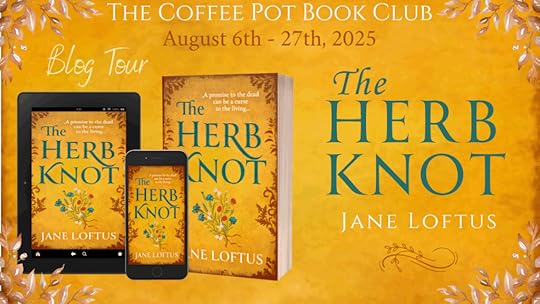
Tour Schedule Page: https://thecoffeepotbookclub.blogspot.com/2025/07/blog-tour-the-herb-knot-by-jane-loftus.html
HIGHLIGHTS: THE HERB KNOT
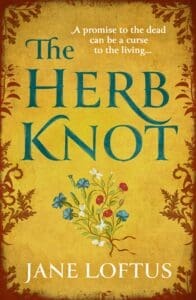
The Herb Knot
By Jane Loftus
Audiobook Narrator: Matt Addis
Blurb:
The Hundred Years’ War comes to life in this spellbinding tale of love, betrayal and conspiracy …
A quest born on the battlefield will change a young boy’s destiny…
Rafi Dubois is five years old when his mother is murdered after the Battle of Crecy in 1346. Alone and lost, Rafi is given a token by the dying Englishman who tried to save his mother’s life: a half-broken family seal which he urges Rafi to return one day to Winchester.
Years later, when Rafi saves a wealthy merchant’s wife from a brutal robbery, he is rewarded with the chance to travel to England, taking the seal with him.
But when he reaches Winchester, Rafi finds himself in a turbulent world full of long-held allegiances, secrets and treachery. His path is fraught with danger and with powerful enemies working against him, Rafi falls in love with Edith, a market apothecary. But in doing so, Rafi unleashes a deadly chain of events which threatens to overwhelm them both…
The Herb Knot is a sweeping and passionate novel set in one of the most tumultuous times in English history, from a powerful new voice.
Triggers: Domestic abuse / violence (not much, but two short depictions), implied sexual assault, attempted murder, actual murder.
Buy Link:
Universal Buy Link: https://books2read.com/u/bzN6Z2
AUTHOR BIO: JANE LOFTUS

Jane Loftus gained a degree in 16th Century European and British history from Surrey before taking a postgraduate degree in modern political history. As a lone parent, she worked in Winchester Waterstones before returning to IT once her son was older.
Hugely passionate about the Middle Ages, she drew inspiration for this novel from the medieval layout of Winchester which has been painstakingly documented.
Jane is originally from London but has lived in Winchester for over twenty years. When not writing, she is usually out walking or watching costume dramas on Netflix – the more medieval the better. She also plays far too many rpgs.
Author Links:
Website: https://janeloftus.com/
Facebook: https://www.facebook.com/profile.php?id=61577760507961
Instagram: https://www.instagram.com/janeloftusauthor/
Bluesky: https://bsky.app/profile/janeloftus.bsky.social
Amazon Author Page: https://www.amazon.co.uk/stores/author/B0F3Q52X9Y
Goodreads: https://www.goodreads.com/author/show/29357528.Jane_Loftus
EXCERPT: THE HERB KNOT
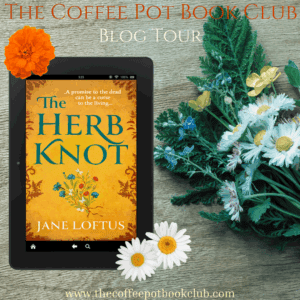
They were almost at the top of the hill. If the going were not so sticky, Rafi would enjoy himself more. It might not be particularly warm, but it was bright and Hampshire was so . . . so green. If he could capture that colour in paint, imagine the illuminations he could have made. Alas, he had to watch his step rather than the scenery. Blast this mud! He feared for his toes.
‘Flanders, then,’ he said. ‘If they can believe I am from London, then surely they can . . . oh my!’
They had begun the gentle descent almost without noticing, and as they rounded the last of the trees, Rafi lifted his head and gasped. Below them, sitting in a peaceful valley in the loop of a river, was the city he had dreamed of for fifteen years. The sun bounced off the honeyed walls of the cathedral, and the spires of the churches were so many he could not begin to count them. The light sprinkled gold on the walls of the castle, sitting snug at the western entrance, the gate open to Aetheling Street, the road that entered from Somborne and Wilton, with its travellers, merchants, friars, priests and apprentices.
Adam turned, his eyes shining. ‘Home!’ He began to canter down the hill.
Rafi devoured the view. It was quite magnificent. The cathedral was a wonder. How could this city be in decline, as he had heard it said? And if it was in decline, what must it have looked like in its pomp?
I am here. Maman, Christophe. I am here. I will find who did this to you.
Winchester. England. Three days ago, he had been on a quayside in Ghent with nothing more than dreams. He had imagined the path he would take, the places he would go for information – the same as in any other great city in Europe. Guildhall, castle, churches, abbeys. They were all there in front of him, but this was not his city and he did not know where to start.
What a great multitude of spires. So many of them. Enough to make his hopes plunge like a stone down a well. Big religious houses received endowments and offered spiritual services and masses in perpetuity for the rich and powerful, but it was not just the cathedral. Smaller churches also held secrets. They would have seen plenty of marks and seals.
Which one should he ask at first? What were they all called? Would the priests be helpful or hostile? Would they offer information willingly or would he have to pay? It would take days – weeks, maybe even months. And then there were the merchants, and lawyers. Where would he stay? Would his money last? What if he was robbed? What if . . .
Stop making it worse. None of these things have happened, and none of these things may ever happen.
‘Halloooo!’ Adam was beckoning to him from halfway down the hill.
Adam . . .
Adam was his only friend in this strange place. Rafi ran, then slid down the hill on his backside, eyes on Adam, the purse of pretty golden florins bumping against his hip. The castle drew closer as he hurtled onward to join his friend.
They entered through the Westgate, their eagerness speeding them downward until they joined the bigger, main thoroughfare that ran from Salisbury and through to Stockbridge and then into the city. There was more traffic on the road now, carts, horses, servants pushing barrows filled with goods. His feet were sucked into the chaos of the mud, breeches soaked by the spray kicked up from a heavy cart. Well, that was that. No point trying to save his clothes now. The drapers had better be as good as he had been told they were, for he sorely needed them.
‘Come, this way!’
They were well inside the gates now, standing in front of the castle, looking down the main road, which ran west to east through the city. Shops, with shutters drawn up and wares displayed, lined the route. Saddlers, skinners and goldsmiths to the left, cutlers and shoemakers to the right. There was so much choice and here, just what he needed: a shoemaker. Soft shoes of calfskin, sturdy boots, for riding maybe. Fancy shoes with scalloped rims and decorated strips of leather for contrast. All very nice but too extravagant for his tastes. Perhaps there were plainer styles inside. He was about to poke his nose through the open shutter of the next shop along when Adam grabbed him by the arm and pulled him away.
Now they passed along Spicers’ Row. What was this smell? A perfume so strong it made the nose prickle. Spikenard, that was it! And galangal, warm and sharp too. There was something else, something he couldn’t catch. His nostrils had the memory of it but . . . ah. Sweat and drying goatskin. That would be from the skinners and the parchment makers. But these spices, the quality was exquisite. And the colour here, the brightness of the saffron in particular – how many times had he used paint like that in the scriptorium?
He would expect to see no better fare even if he travelled to Spain or the Levant. One day, maybe he would, once his search here was over. He would eat rich, dark olives, shiny like beetles in glistening oil, and there would be no Van Loo to call him to work. He longed to tarry, but Adam pushed him on further down the high street towards a row of bright canopies and open windows that jutted further into the road than the rest.
 Twitter: @cathiedunn
Twitter: @cathiedunn
Instagram & Threads: @thecoffeepotbookclub
Bluesky: @cathiedunn.bsky.social
August 17, 2025
Book Review Bone Hash Skye Griffith #Mystery #Suspense #Southwest #WomenSleuths
I’m delighted to welcome Skye Griffith as the featured Colorado author of the Southwest Murder/Suspense, Bone Hash (Archaeologist Aideen Connor Mysteries), published by Artemesia Publishing, LLC on June 24, 2025 (284 pages).
Below are highlights of Bone Hash, Skye Griffith’s author bio, interview, and my 5-star review of her gripping modern mystery/suspense that captures the harsh, unforgiving beauty of the American Southwest
HIGHLIGHTS: BONE HASH

Bone Hash
(Archaeologist Aideen Connor Mysteries)
By Skye Griffith
Blurb
Ancient Bones. A modern murder. A deadly secret buried deep in the desert.
In the vast untamed desert of northern Arizona, Aideen Connor signs on as lead archaeologist hoping to find peace after witnessing her husband’s violent death. Instead, she stumbles into a mystery as ancient and dangerous as the land itself. Aideen’s team uncovers a “bone hash,” human bones showing evidence of prehistoric cannibalism. Then a brutal murder shocks the residents of the nearby Hopi Reservation. Unsettling connections emerge between the murder and her dig, and Aideen’s world begins to unravel.
Aideen’s boss blames her when the bone hash is stolen. Violent threats begin: A sheep is viciously killed under her residential trailer; a photo of her dead husband is left in its blood. A hulky stranger chases her across remote backcountry and attacks her. All threats point to a grim reality: someone wants her gone. Aideen must navigate a maze of buried truths with only her dog, Dakota for companionship. Every clue leads her closer to the secrets buried at her dig that could cost her more than her career—they could cost her life.
“Griffith has created a riveting work that successfully blends a chilling mystery and a revealing character study into a potent whole.” Kirkus Review
Buy Links:
Amazon: https://www.amazon.com/Bone-Archaeologist-Aideen-Connor-Mysteries/dp/1963832132
Barnes & Noble: https://www.barnesandnoble.com/w/bone-hash-skye-griffith/1146845598
West Side Shops: https://www.westsidebooks.com/book/9781963832136
Bookshop: https://bookshop.org/p/books/bone-hash-skye-griffith/22229980
AUTHOR BIO: SKYE GRIFFITH

Award-winning event producer and passionate explorer, Skye Griffith debuts her talent for storytelling with Bone Hash, a gripping mystery inspired by her explorations of archaeological sites and rugged backcountry across the American Southwest.
Skye’s fascination with prehistoric cultures and their ability to thrive in unforgiving landscapes sparked the heart of her story. Through years of research and first-hand adventures, she crafts an authentic and vivid narrative of secrets buried in desert sands.
Before turning to fiction, Skye orchestrated large-scale events—including Denver’s first world championship, the Stanley Cup celebration, and the Pope’s historic visit to Denver during World Youth Day. Her articles have appeared in the National Endowment for the Arts newsletter and other industry publications. She holds degrees from the Universities of Cincinnati and Denver and is a member of the Denver Woman’s Press Club, Mystery Writers of America, and Sisters in Crime. She lives in Denver with her husband and their 115 lb Malamute.
Author Links:
Website: https://skyegriffith.com/
LinkedIn: https://www.linkedin.com/in/skyegriffith/
Facebook: https://www.facebook.com/skye.griffith1
BookBub: https://www.bookbub.com/authors/skye-griffith
AUTHOR INTERVIEW: SKYE GRIFFITH
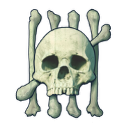
1. What inspired you to write Bone Hash?
After enjoying travels throughout the U. S., Europe and South America, I realized the high desert American Southwest is one of the places on earth I like visiting most. Ever since my first trip to Mesa Verde, an extensive archaeological site in southwestern Colorado, I’ve held a fascination for the people who once walked the Four Corners Region, the people whom we now identify as Ancestral Puebloan. Most archaeologists believe they are the ancestors of modern-day Pueblo people now living in New Mexico and Arizona.
These prehistoric Native Americans created hundreds of villages across Colorado, Utah, Arizona and New Mexico from the only building materials available—rocks and mud. At Mesa Verde in southwestern Colorado, I learned of their dry land farming on the mesa tops, their well-thought-out irrigation systems and how they’d managed to thrive in an environment both harsh and beautiful. Then between 1275 and 1300 CE, a thirty-to-fifty-year drought forced them to abandon everything and leave their homes. Some scientists also speculate about the impact of increased violence and cultural collapse brought on by the environmental devastation.
When I began to consider what challenges, a modern-day archaeologist might face while she examined the material culture of prehistoric people who’d left their homes behind—a devastating loss—while she came to grips with her own loss after witnessing the violent death of her husband, I knew I had to write this story, and one-by-one the characters in Bone Hash began to reveal themselves.
2. How much research was involved in writing Bone Hash?
I spent years researching Bone Hash! I visited archaeological sites including Bandelier, Hovenweep, Aztec, Canyon de Chelly and others and teaching sites such as Crow Canyon in southwestern Colorado. I interviewed archaeologists and read their research papers, hiked sites such as Canyon of the Ancients where Ancestral Puebloans once lived, visited modern day Pueblos, such as Taos Pueblo and villages on the Hopi Reservation and camped in many remote areas on the Colorado Plateau.
I interviewed sheriffs in multiple counties in Arizona. I interviewed Bureau of Land Management (BLM) special agents tasked with protecting ancient sites in the Southwest, F. B. I. agents and the list goes on!
3. Why did you choose to incorporate finding human bones (bone hash) that showed evidence of prehistoric cannibalism in the story?
From scientific papers I’ve read, cannibalism on the Colorado Plateau, during the drought especially, was somewhat common. It’s not something Native Americans like to discuss, most likely because the issue has been used negatively against them. Yet in prehistoric times, cannibalism was relatively common throughout the world, including among my Celtic ancestors. There are archaeological sites all over Europe, as an example, where prehistoric cannibalism was discovered. I believe it adds to the reader’s awareness as to how utterly desperate these prehistoric times were. And it adds to the considerations the modern archaeologist who is the main character in my book needs to consider–how to understand the ancient people she is studying without judging them.
4. Which sub-character is your favorite in Bone Hash? Explain why.
I’d have to confess it’s Dakota, Aideen’s dog! I think I’ve been a dog lover since birth, and I’ve known firsthand how loyal dogs are. It made sense to me there would be a strong bond between woman and dog given the remoteness of the dig and the fact Aideen rescued the dog and saved its life.
5. What is your favorite quote from Bone Hash?
It would have to be what Frank Nakai says at the end of the final chapter but stating it here would be too big of a spoiler!
6. What makes you keep going? What advice would you give to new writers?
I came to writing fiction later in life, fulfilling a life-long dream, and I’m so grateful I finally have the time to devote to it. More importantly, Bone Hash is the response to my travels throughout the Colorado Plateau and many wonderful adventures. Writing about them helps me enjoy those adventures all over again! Advice to new writers: Write what you love! The old adage is “write what you know.” Good advice, but it’s also possible to learn new things and do extensive research. I’d say go for that!
7. Which writer, living or dead, do you admire most?
Too hard to get it down to one person. The writing of Louis de Bernières in Corelli’s Mandolin is some of the most beautiful and poignant I’ve read.
I love the work of Tana French.
You must give credit to the brilliant storytelling of Charles Dicken.
James, by Percival Everett is a marvel.
There are so many writers’ whose works I love—all for different reasons—and often one book stands out more than their whole body of work.
BOOK REVIEW: BONE HASH
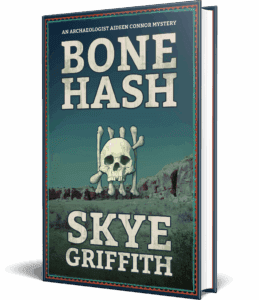
Archaeologist Aideen Connor, haunted by the tragic death of her husband, must find strength to overcome threats in her quest to uncover secrets from the ancient past in Bone Hash by Skye Griffith. The murder mystery/suspense captures the harsh, unforgiving beauty of the American Southwest as Aideen starts her life anew as the lead archaeologist at Moenkopi Ridge, an Ancestral Pueblo settlement.
However, Aideen awakes to danger when a stranger barges into her motel room seeking a photo of a native woman he left behind. She escapes his clutches and reports the incident to tribal policemen. When she drives to the archaeological dig, the stranger rams her mustang off the road.
Incidents at the archeological site becomes deadly when a bone hash showing signs of cannibalism from the past is uncovered by Aideen’s archaeological team but then is stolen. As Aideen faces other threats to her career and life, she struggles to connect the web of events: murder of a Hopi woman, deadly intruders at the dig, and illegal drugs hidden among stored artifacts. Ultimately, she must delve into her tragic past to save her career and her life in a riveting climax full of twists.
Author Skye Griffith masterfully weaves the Southwest landscape into the story to help create suspense. Creatures lurk everywhere in darkness, ready to strike like her adversaries. The meticulous details of various tribal enforcement agencies and archaeological digs add depth and reality to the story. The action scenes are heart-pounding, particularly the climax. The twists will keep you turning the pages to find out how the various incidents are connected.
The narrative is told from the first-person perspective of Aideen, a spunky and resilient woman who meets challenges head-on. Even so, she sometimes shows her vulnerability due to her husband’s untimely death that she was unable to prevent. She has formed a strong bond with her companion dog, Dallas, whom she rescued. Their interplay blends smoothly in the plotline and adds to poignant moments. The climax and ending resonate with me because Aideen uses the tragedy of her husband’s death to gain strength and overcome threats to her life and career, so she can move forward. The epilogue promises more stories about Aideen in the future.
Set in the Southwest, Bone Hash is a gripping, multi-layered mystery/suspense with a memorable archaeologist sleuth that fans of Tony and Anne Hillerman might enjoy. Highly recommended.
August 10, 2025
Sandro Martini Ciao, Amore, Ciao #CiaoAmoreCiao #HistoricalFiction #WWII #BlogTour #TheCoffeePotBookClub @MartiniAlex @cathiedunn
I’m delighted to welcome Sandro Martini as the featured author in The Coffee Pot Book Club Blog Tour being held between August 4th – 25th, 2025. Sandro Martini is the author of the Historical Fiction, Ciao, Amore, Ciao (Alex Lago Book #1), published by Black Rose Writing on March 26, 2025 [426 pages (kindle); 385 pages (paperback)].
Below are highlights of Ciao, Amore, Ciao, Sandro Martini’s author bio, and a guest post about the historical background of the novel.
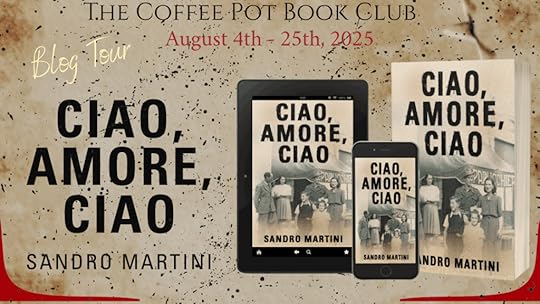
Tour Schedule Page: https://thecoffeepotbookclub.blogspot.com/2025/07/blog-tour-ciao-amore-ciao-by-sandro-martini.html
HIGHLIGHTS: CIAO, AMORE, CIAO

Ciao, Amore, Ciao
(Alex Lago Book #1)
By Sandro Martini
Blurb:
An enthralling dual-timeline WWII family mystery, based on the heartbreaking true story of the massacre in a small town in Italy in July of 1945, from award-winning, bestselling novelist Sandro Martini.
“A gripping saga that roots excruciating betrayals in a nation’s tragic history.” –Kirkus Reviews
In the winter of 1942, an Italian army of young men vanishes in the icefields of the Eastern Front. In the summer of 1945, a massacre in Schio, northeastern Italy, where families grieve the dead, makes international headlines.
In present-day Veneto, an ordinary man is about to stumble onto a horrifying secret.
Alex Lago is a jaded journalist whose career is fading as fast as his marriage. When he discovers an aged World War II photo in his dying father’s home, and innocently posts it to a Facebook group, he gets an urgent message: Take it down. NOW.
Alex finds himself digging into a past that needs to stay hidden. What he’s about to uncover is a secret that can topple a political dynasty buried under seventy years of rubble. Suddenly entangled in a deadly legacy, he encounters the one person who can offer him redemption, for an unimaginable price.
Told from three alternating points of view, Martini’s World War II tale of intrigue, war, and heartbreak pulls the Iron Curtain back to reveal a country nursing its wounds after horrific defeat, an army of boys forever frozen at the gates of Stalingrad, British spies scheming to reshape Italy’s future, and the stinging unsolved murder of a partisan hero.
Ciao, Amore, Ciao is a gripping story of the most heroic, untold battle of the Second World War, and a brilliantly woven novel that brings the deceits of the past and the reckoning of the present together.
“Balances action, suspense, and emotional depth to deliver a truly immersive, thought-provoking read with an unflinching look at the sins of the past and the lengths to which the powerful will go to keep them buried.” ~ Sublime Book Review
Any Triggers: War
Buy Link:
Universal Buy Link: https://books2read.com/u/4A6R10
This title is available to read on #KindleUnlimited.
AUTHOR BIO: SANDRO MARTINI

Sandro Martini has worked as a word monkey on three continents. He’s the author of Tracks: Racing the Sun, an award-winning historical novel.
Sandro grew up in Africa to immigrant parents, studied law in Italy, chased literary dreams in London, hustled American dollars in New York City, and is now hiding out in Switzerland, where he moonlights as a Comms guy and tries hard not to speak German.
You can find him either uber-driving his daughter, chasing faster cars on the autobahn, or swimming in Lake Zurich with a cockapoo named Tintin.
His latest historical suspense novel, Ciao, Amore, Ciao, is now available.
Author Links:
Website Twitter / X Facebook Instagram
Book Bub Amazon Author Page Goodreads
GUEST POST: SANDRO MARTINI

Most English-language accounts of Italy in the Second World War stop at Mussolini’s surrender and switch of sides, yet the deeper story— the landscape of my novel Ciao, Amore, Ciao—has rarely been told. Fascism’s roots stretch beyond Rome to post-1918 disillusion: London’s secret promise of Dalmatia to Italy; Italy’s betrayal at Versailles, branded by poet-soldier Gabriele D’Annunzio as the “mutilated victory”; and D’Annunzio’s seizure of Fiume, where fascist symbols, chants, and salutes were first codified.
Paradoxically, fascism’s demise didn’t happen in September 1943 when the Allies made landfall in Sicily. It began nine months earlier, on the Don River, during the Battle of Stalingrad. Mussolini, hoping to share the Baku oilfields with his Nazi chums, had sent more than 250,000 Italians east in 1942, my uncle included. Quickly reassigned to shield the German Sixth Army’s exposed flank as the might of the Nazi war machine stalled at the gates of Stalingrad, Italy’s army met the full force of the Soviet winter counter-offensive. On 26 December 1942, the Red Army smashed through the Italian lines, trapping Italians and Germans alike in what survivors still call “the sack” that doomed both the Sixth Army in Stalingrad and, ultimately, the Axis war itself. In less than a month, the course of the war had changed irreversibly.
What followed the Red Army’s offensive was a 14-day nightmare march for the Italian army. In a frozen landscape where the temperature never rose above -30°C, the Alpine Corps fought a dozen rearguard battles while walking some 250 km toward a new, shaky Axis front. Their final obstacle was the railway hamlet of Nikolayevka, reached on 26 January 1943 and remembered as Italy’s Thermopylae: those who burst through lived; those who did not vanished into the snow. It ended with the last-ever human wave attack in recorded warfare.
The numbers are staggering. Of roughly 230,000 Italian soldiers on the Don, only about 140,000 ever saw home again. Roughly 85,000 died in battle, on the frozen retreat, or in Soviet camps. Of the 60,000 taken prisoner and force-marched to POW camps (the way of the davai), scarcely one in six returned between 1945 and 1954. Among the disappeared was my 19-year-old uncle, Alessandro, whose fate my anti-hero, Alex Lago, strives to uncover in Ciao, Amore, Ciao. Soviet archives opened after 1991 solved thousands of family mysteries, yet his name never surfaced; dog tags still emerge from the same steppe which is today scarred by a new war between Russia and Ukraine. But of my uncle Alessandro’s fate, nothing.
Those who limped back in 1943 were met not with parades but with silence and shame. Fascist propaganda could not admit the annihilation of its elite troops, and within months, many survivors were in the hills with the Russian-armed partisans, battling first the fascists and then, when Italy surrendered in 1943, the Germans who had raced south to occupy their former ally.
Liberation in 1945 ushered in the horror of the “resa dei conti”—the settling of scores. In the Po Valley’s “Triangle of Death”, thousands of fascist collaborators were summarily executed and buried in mass graves, a grisly mirror of the squadristi terror campaigns of the 1920s.
One episode, the July 1945 massacre in Schio in the Veneto, drew the scrutiny of the New York Times and of Allied investigators. With Italy’s Communist Party poised to dominate post-war elections, and Washington and London fearful that an Italian swing to the left might pull France, and perhaps all of Western Europe, behind the Iron Curtain, it suddenly became politically expedient to pin the post-war massacres on Communist partisans. And Schio was their mascot because it was one of only two towns that were liberated not by the Allies but by the partisans themselves. The message the Allies wanted to give was, “Look at what happens when the Communists take over.”
Come 1948 and the first post-war elections, the newly minted CIA would use that massacre in Schio as part of its propaganda campaign to buy its first client state: They’d funnel millions from the Marshall Plan to spread propaganda linking the Italian Communist Party to the post-war massacres in 1945, accuse the communists of wilfully colluding with the Soviets to keep Italian POWs in the USSR, and provide literal “bags of cash” to US-friendly politicians. It worked, and that Italian election became the blueprint for the CIA’s covert proxy wars for decades after.
It’s a rich tapestry for a novel. But the personal is where Ciao, Amore, Ciao is grounded: In my uncle’s fate in Russia, and my dad, who saw the massacre in Schio as a 15-year-old boy. And the scars that would haunt him his whole life. It’s the story of the “little” people trapped in these cold machinations of the powerful, a story of a family of no ones swept away by history, fate, and the limitless supply of human folly.
 Twitter: @cathiedunn
Twitter: @cathiedunn
Instagram & Threads: @thecoffeepotbookclub
Bluesky: @cathiedunn.bsky.social
August 6, 2025
Jiu Da The Winding Dirt Road #TheWindingDirtRoad #HistoricalChineseFiction #PoliticalFiction #HistoricalFiction #BlogTour #TheCoffeePotBookClub @JiudaLog @cathiedunn
I’m delighted to welcome Jiu Da as the featured author in The Coffee Pot Book Club Blog Tour being held between August 4th – 8th, 2025. Jiu Da is the author of the Historical Fiction, The Winding Dirt Road, published by Historium Press on May 27, 2025 (268 pages).
Below are highlights of The Winding Dirt Road, Jiu Da’s author bio, and a snippet from the book.

Tour Schedule Page: https://thecoffeepotbookclub.blogspot.com/2025/07/blog-tour-the-winding-dirt-road-by-jiu-da.html
HIGHLIGHTS: THE WINDING DIRT ROAD
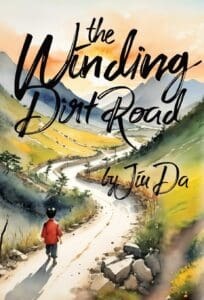
The Winding Dirt Road
By
Jiu Da
Blurb:
Written as an antithesis to all first-hand and second-hand propaganda written by both Chinese and foreign writers for China in the good part of the 20th century in a fictional form, this collection, through different times and lands, gives insights into how human docile nature and characteristics are manipulated and brought about cultural and social corrosion over the century. The outcome thus sees “a monumental loss breathtakingly massive than any period that preceded it.” Subsequently, it foreshadows a system that “would bring out not the best but the worst in people, against people, any people.” (Event Horizon)
The first story is written as an introduction in addition to the prologue. From there, the collection proceeds with interrelated subjects or topics, building up causes and factors. At every turn, it gathers momentum and convenes halfway through the book to form the major components of critical perspectives at a juncture.
Hoarded in the depth of memories of the past decades, this has been a work long overdue.
Buy Link:
Universal Buy Link: https://geni.us/VwB3xZ
AUTHOR BIO: JIU DA

For years, Jiu Da has been intrigued by the question of whether the environment makes us who we are or whether we are the ones that shape our environment. For the good parts of early years, he stubbornly believed that motivation, talent, and effort could change the outcomes. It did not.
It was not until the virus hit while finding himself perching at home that he came to accept that the environment is indeed the hand that shapes human behavior.
It was during this time that he began his first work, drawing from his love in literature, history and a lifetime of seemingly useless yet fascinating knowledge hoarded in the depth of his mind.
Author Links:
Author Page on Publisher’s Website: https://www.historiumpress.com/jiu-da
Twitter / X: https://x.com/JiudaLog
Instagram: https://www.instagram.com/jiuda99/
Bluesky: https://bsky.app/profile/jiuda.bsky.social
Amazon Author Page: https://www.amazon.com/stores/Jiu-Da/author/B0F63SL22K
Goodreads: https://www.goodreads.com/author/show/55530207.Jiu_Da
SNIPPET: THE WINDING DIRT ROAD
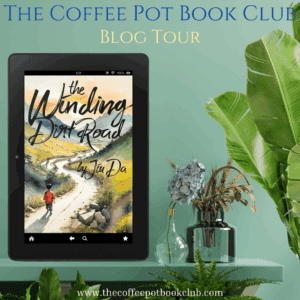
“Even though chance favored the prepared mind, discovering the plant was hardly a serendipity. In truth, it was a curse in disguise – a precipice gamble for a desperate cure, a lethal quest for a mortal end, poison for poison.” ~ The Mother Of All Antidotes
 Twitter: @cathiedunn
Twitter: @cathiedunn
Instagram & Threads: @thecoffeepotbookclub
Bluesky: @cathiedunn.bsky.social
July 31, 2025
Julian de la Motte The Will of God #TheWillOfGod #HistoricalFiction #Crusades #WilliamTheConqueror #BlogTour #TheCoffeePotBookClub @cathiedunn
It’s my delight to welcome Julian de la Motte as the featured author in The Coffee Pot Book Club Blog Tour being held between July 28th – August 1st, 2025. Julian de la Motte is the author of the Historical Fiction, The Will of God, published by Historium Press on May 13, 2025 (392 pages).
Below are highlights of The Will of God, Julian de la Motte’s author bio, and an excerpt from the book.

Tour Schedule Page: https://thecoffeepotbookclub.blogspot.com/2025/07/blog-tour-the-will-of-god-by-julian-de-la-motte.html
HIGHLIGHTS: THE WILL OF GOD
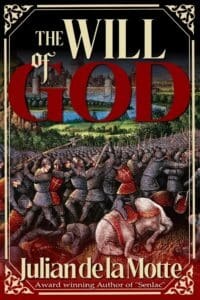
The Will of God
By Julian de la Motte
Blurb:
“Deus Lo Vult!”
Gilles is the natural son of the Earl Waltheof, executed by William the Conqueror for supposed treachery. Raised in Normandy by Queen Matilda of England, Gilles is a young servant of Robert, Duke of Normandy, when the first call for a Holy War against the infidel and for the liberation of Jerusalem is raised in Christendom. Along with thousands of others, inspired by a variety of motives, intense piety mixed with a sense of adventure and the prospects of richness, Gilles becomes a key and respected follower of the Duke of Normandy and travels through France and into Italy to the point of embarkation for Constantinople and the land of the Greeks.
In this epic first phase of a long and gruelling journey, Gilles begins to discover a sense of his own strengths and weaknesses, encounters for the first time the full might and strength of the Norman war machine and achieves his much coveted aim of knighthood, as well as a sense of responsibility to the men that he must now lead into battle.
The Will of God is the literal translation of the Latin phrase “Deus Lo Vult”; a ubiquitous war cry and a commonly offered explanation of all the horrors and iniquities unleashed by the First Crusade of 1096 to 1099, when thousands of Europeans made the dangerous and terrifying journey to the Holy Land and the liberation of Jerusalem. It is the first of two books on the subject.
Praise for The Will of God:
“De la Motte has superpowers as a writer of historical fiction; he’s a warhorse of a writer bred to stun and trample the literary senses. You won’t stop turning the pages of The Will of God.” ~ Charles McNair, Pulitzer Prize nominee and author of Land O’Goshen
Buy Link:
Universal Buy Link: https://geni.us/uXe6u
AUTHOR BIO: JULIAN DE LA MOTTE
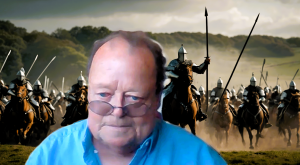
Julian de la Motte is a Londoner. He graduated from the University of Wales with a degree in Medieval History. He was further awarded a Master of Arts qualification in Medieval English Art from the University of York.
He studied and taught in Italy for nearly four years before returning to the U.K. and a career as a teacher, teacher trainer and materials designer before taking up a new role as a Director of Foreign Languages and of English as a Foreign Language.
Married and with two grown up children, he is now extensively involved in review writing and historical research, primarily on medieval history.
”The Will of God” [the first of two books on the subject of the First Crusade] is his third novel.
Author Links:
Website: www.historiumpress.com/julian-de-la-motte
Facebook: https://www.facebook.com/julian.delamotteharrison.3
Amazon Author Page: https://www.amazon.com/stores/author/B08XWMRPYK
Goodreads: https://www.goodreads.com/author/list/20873400.julian_de_la_Motte
EXCERPT: THE WILL OF GOD

When his father’s handsome and youthful head was separated from his shoulders, his son Gilles was a sturdy and robust child just over a year old and able to sit up and take note of things immediately around him. His father’s crime had been that of a complicity in a treason that he had failed to explain away with any degree of conviction or success. He may well, on this particular occasion, have been wholly innocent; but it had happened once too often in his brief political career to be overlooked. So, up the little hill just outside Winchester he went. The mother of Gilles, the beautiful Eloise of La Petite Flague, was, of course, devastated and it was said of that truly peerless beauty that her glance remained forever downcast and tragic to the end of her days.
Amongst the local people of the English, the former Earl soon achieved the status of an unacknowledged saint. Even days after the execution his head, or so it was said, when it was reattached to his body for the purposes of a fit and proper Christian burial, bore a sweet smile of utter serenity. Both the head and the body were fresh and bore the strong scent of rosemary and thyme, untouched by the corruption of death. It was not long before stories of miracles began to circulate. Nothing major or cosmic, there was no raising of the dead nor any parting of any waves, but, rather, a localised curing of warts and the removal of blinding headaches from an itinerant cleric in minor orders. As with many saints before him, Waltheof was obliged to start small in his saintly career.
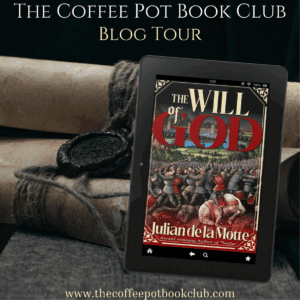
 Twitter: @cathiedunn
Twitter: @cathiedunn
Instagram & Threads: @thecoffeepotbookclub
Bluesky: @cathiedunn.bsky.social
July 27, 2025
Judith Arnopp Marguerite: Hell Hath No Fury! #HistoricalFiction #BiographicalFiction #WarsOfTheRoses #MargueriteOfAnjou #BlogTour #TheCoffeePotBookClub @JudithArnopp @cathiedunn
It’s my pleasure to welcome Judith Arnopp again as the featured author in The Coffee Pot Book Club Blog Tour being held between July 28th – August 1st, 2025. Judith Arnopp is the author of the Historical Fiction / Biographical Fiction: Marguerite: Hell Hath No Fury! The novel was independently published by the author on June 21st, 2025 (342 pages).
Below are highlights of Marguerite: Hell Hath No Fury!, Judith Arnopp’s author bio, and an excerpt from her book set during the War of the Roses.
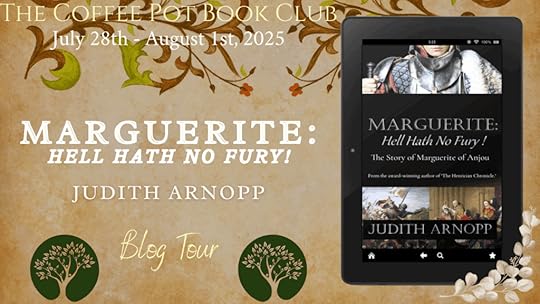
Tour Schedule Page: https://thecoffeepotbookclub.blogspot.com/2025/06/blog-tour-marguerite-by-judith-arnopp.html
HIGHLIGHTS: MARGUERITE: HELL HATH NO FURY!
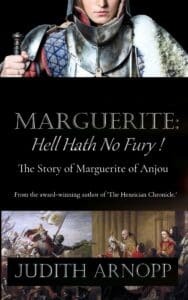
Marguerite: Hell Hath No Fury!
By Judith Arnopp
Blurb:
Marguerite: Queen of England
From the moment Henry VI’s new queen, Marguerite of Anjou, sets foot on English soil she is despised by the English as a foreigner, and blamed for the failures of the hundred years war in France.
Her enemies impede her role as the king’s consort and when Henry sinks into apparent madness, her bid to become regent is rejected. Marguerite must fight, not only for her own position but to maintain Henry’s possession of the crown.
The ambitious Duke, Richard of York, seizes control of the country, thrusting Marguerite aside and inflating the mutual hatred between the houses of York and Lancaster. But the queen refuses to relinquish power and fights determinedly for the rights of her son, Edward of Lancaster.
The long and bitter civil conflict, that has come to be known as the War of the Roses, commences.
Buy Link:
Universal Buy Link: https://mybook.to/mhhnf
This title is available to read on #KindleUnlimited.
AUTHOR BIO: JUDITH ARNOPP
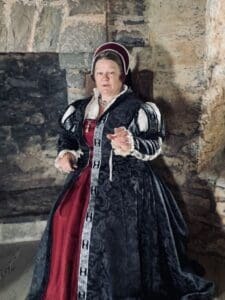
A lifelong history enthusiast and avid reader, Judith holds a BA in English / Creative Writing and a Masters in Medieval Studies. She lives on the coast of West Wales where she writes both fiction and non-fiction. She is best known for her novels set in the Medieval and Tudor period, focussing on the perspective of historical women but recently she has written a trilogy from the perspective of Henry VIII himself.
Judith is also a founder member of a re-enactment group called The Fyne Companye of Cambria which is when and why she began to experiment with sewing historical garments. She now makes clothes and accessories both for the group and others. She is not a professionally trained sewer but through trial, error and determination has learned how to make authentic looking, if not strictly historically accurate clothing. A non-fiction book about Tudor clothing, How to Dress like a Tudor, was published in 2023 by Pen and Sword.
She runs a small seaside holiday let in Aberporth and when she has time for fun, likes to garden and restore antique doll’s houses. You can find her on most social media platforms.
Her novels include:
A Song of Sixpence: the story of Elizabeth of York
The Beaufort Chronicle: the life of Lady Margaret Beaufort (three book series)
The Henrician Chronicle: comprising of:
A Matter of Conscience: Henry VIII, the Aragon Years (Book One of The Henrician Chronicle)
A Matter of Faith: Henry VIII, the Days of the Phoenix (Book Two of The Henrician Chronicle)
A Matter of Time: Henry VIII, the Dying of the Light (Book Three of The Henrician Chronicle)
The Kiss of the Concubine: a story of Anne Boleyn
The Winchester Goose: at the court of Henry VIII
Intractable Heart: the story of Katheryn Parr
Sisters of Arden: on the Pilgrimage of Grace
The Heretic Wind: the life of Mary Tudor, Queen of England
Peaceweaver
The Forest Dwellers
The Song of Heledd
The Book of Thornhold
A Daughter of Warwick: the story of Anne Neville, Queen of Richard III
Marguerite: Hell Hath no Fury!
Author Links:
Website Blog Twitter / X Facebook Instagram Threads
Bluesky Pinterest Book Bub Amazon Author Page Goodreads
EXCERPT: MARGUERITE: HELL HATH NO FURY!

1443 – Having produced an heir for England, Marguerite returns to court, hoping for a warm welcome.
After an uneasy Christmas season, the new year sees the divisions at court widening and deepening. I am convinced the great fissure has grown so wide that it will never now be healed. The uneasy friendship that once existed has inflated into the blackest enmity. York is like a great chained beast that, once unleashed, will tear me to pieces. I am the Frenchwoman, the whore, and he has even begun a rumour that Prince Edward is not the king’s son. It is an easy lie to believe; one look at Henry is enough to convince any man the king is not capable of begetting a child, let alone a son.
As the day of the council meeting approaches, I prepare myself. I stand at my window and watch as the dawn slowly reveals a white sky; cold, yet showing no threat of rain or worse. I have them dress me in my finest, most regal robes, and enter the meeting to discover proceedings have already begun without me. A gentleman speaking halts mid-sentence when I enter, and all heads turn toward me. Heedless of my interruption, I take a seat hastily vacated by Warwick at the head of the table.
“Gentlemen. My apologies for my late arrival. I see my absence hasn’t delayed you.”
They bow and wait for my permission to be seated. I keep them standing for as long as I can before reluctantly indicating they may sit.
“Gentlemen,” I repeat, endowing them with a brittle smile. “My advisor and I have prepared a list of five articles for the immediate future. The king is still not completely well, his illness is lasting longer than we had hoped, but the royal physicians assure me he is showing great signs of improvement. Therefore, for a short time, the governing of the country can be safely undertaken by myself and the gentlemen listed in this document.”
York stands up, opens his mouth to interrupt, but I continue to speak, raising my voice a little, determined to make my point. In truth, several of my former supporters are uneasy; not at my ability to rule in Henry’s stead, but at the obvious effect such a move will have on the atmosphere at court, where enmities increase daily, forcing men to take sides. No man should be required to choose between the Queen and the Duke of York, whose lust for power knows no bounds. But it is York who should withdraw, not I.
In more civilised countries, the solution would be obvious. There is nobody better suited to protect the well-being of my husband and son than myself, the queen. York, however, does not agree. As soon as he can make himself heard, he snarls his dissention.
“That is ludicrous. No man in England will feel safe under the rule of a woman. As the king’s heir, it is clearly my duty…”
“But you are no longer his heir,” I interject coolly. “My son, the Prince Edward, is now heir, and I am perfectly equipped for the role of regent. My own mother ran my father’s affairs for many years …”
“The affairs of a duchy! This is England, we do things properly here. There is not a man present who will agree to such a thing.”
I swallow my fear that he might be right. He will know that my allies, given the opportunity, will completely oust him from power. I school my expression to one of supreme confidence.
“You have not even glanced at the document, my lord. Perhaps you should do so and then we can continue with the day’s business.”
He snatches the parchment from the table and scowls at it, smacks it with the back of his fingers.
“This is preposterous nonsense. She demands the rule of the country, the right to appoint all officers of the realm, including the bishoprics! As you can imagine, that would leave many of us kicking our heels in the country while she turns England into another territory of France.”
I lean forward with my brows lowered.
“I would do no such thing. I am the Queen of England; the realm, the king and his heir are of supreme importance to me. I have no loyalty to France.”
He tosses the carefully drawn paper onto the table.
“I don’t know why you took the time and trouble to have such nonsense set to parchment. There are few here who will vote in your favour. Your role as queen I will grant you, but that role requires nothing more than the production of heirs. I suggest you see if you can rouse the king enough to give you one, if indeed it was he who sired your son.”
A gasp runs around the gathering. Even I am taken aback. Buckingham stands up.
“You speak treason, York, and defame your king! I demand an apology.”
I turn my head slowly toward Buckingham; it has not escaped my notice that he speaks out in defence of the king’s virility, but fails to defend my virtue. But York, knowing he has overstepped the mark, backs down.
“Forgive me, Gentlemen, I was too hot. I beg pardon.”
Again, I do not miss that he has omitted me from his apology.
“I suppose we must take a vote on it though,” he says. He reads slowly through the list of articles, his bored voice making no secret of how he expects his adherents to vote. “Those who are for, raise your hands.”
A few hands wave in the air; those I expected to cast in my favour.
“Those against?”
A bristling of fingers, as aggressive as spears, puts an end to my aspirations as Protector. Sickness washes over me, hatred and frustration that lies in my belly as bitter as poison. Without speaking, I stand up and quit the company and, as I hurry away, the sound of their derision follows me, the cruel masculine ridicule for a woman who has attempted to step from her allotted place.
God damn them all.
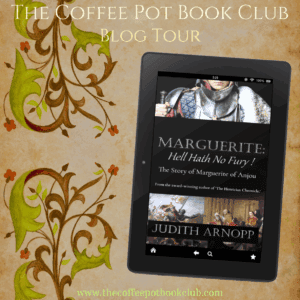
 Twitter: @cathiedunn
Twitter: @cathiedunn
Instagram & Threads: @thecoffeepotbookclub
Bluesky: @cathiedunn.bsky.social



